Palermo
- Palermo is both the Regional and Provincial Capital.
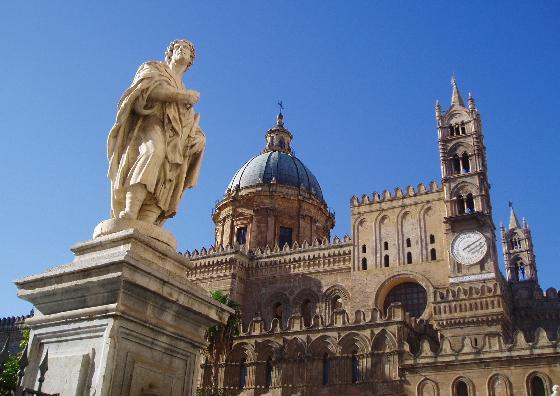
Mondello–
A short distance from Palermo is the former fishing village of Mondello.
This once swampy malaria infested area was drained about a hundred years ago and
turned into a beach resort. The lovely buildings which line the lungomare
are done in the Liberty style. Mondello is known for its beach, nightlife
and seafood restaurants.
The Sanctuary of St. Rosalia, patron saint of Palermo, is located at the top of
Mount Pellegrino in Mondello. Legend tells us she, as the daughter of the
Duke of Sinibaldo, was promised in marriage to a much older man. She ran
away becoming a hermit and dedicated her life to prayer and penitence.
Five centuries later, the finding of her mortal remains marked the end of a
serious plague. The simple church in the cave is her shrine.
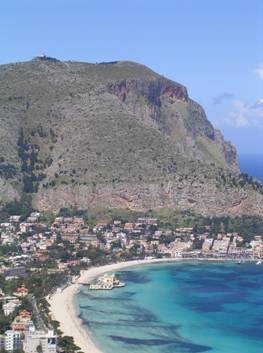
Campofelice di Roccella-
It is believed that the original tower on the beach was destroyed by the Arabs
in the 900’s and rebuilt in the 1400’s. The modern town dates from 1699.

Cefalu
- Legend tells us that King Roger II was caught in a terrible storm, falling to
his knees he prayed for divine intervention and swore an Oath – that if his ship
could make it to shore and survive the night, he would build in that place a
great Cathedral dedicated to the Mother of God. History tells us his
motives were probably more political in origin. Never the less, Cefalu has
been inhabited since pre-Hellenic times and attained its greatest splendor
during the Norman period. The Duomo is perhaps one of the most impressive
Norman monuments on the island.
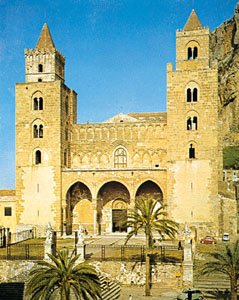
Caccamo
-
Possibly founded by the survivors of the battle of Himera in 480 B.C., Caccamo
today is known for the crenellated walls of its Castle. The handsome
castle was built during Norman times possibly on the site of an earlier
fortress. Through the centuries it was altered many times by the various
ruling families that owned her. It was also here in the castle that the
Norman barons took an oath in their revolt against King William I in 1160.
The town is also known for its numerable churches, especially the Chiesa Madre,
originally built in 1090.

Castelbuono
-
Picturesquely nestled in the Madonie Mountains and originally a Sican
settlement, Castelbuono takes its name from the castle built in 1316 by the
Ventimiglia family. The castle's chapel, built in the 17th century, contains the
relics of St. Ann. The Town itself is quite charming and the churches are worth
exploring.
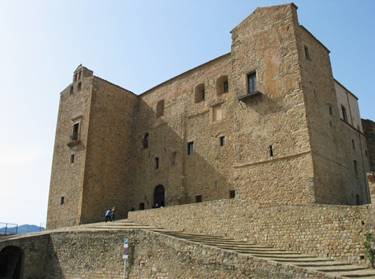
Monreale
- The town developed around the Benedictine Monastery built by King William II
in 1172-1176. The Cathedral is truly the most splendid example of Arab
Norman artistry. The simple façade does not prepare you for the splendors
within. The Cathedral contains the most beautiful and complete cycle of
mosaics in the Byzantine tradition. The walls are completely decorated with
scenes from the old and new Testaments.

Termini Imerese
- Evidence in the caves surrounding the city date from the Upper Paleolithic,
Copper and Bronze ages. It was populated and developed by the Greeks after the
destruction of Himera in 480 B.C... Termini flourished under Roman domination.
Popular for its hot springs and Roman baths, examples of Roman aqueducts can
still be seen in the area.
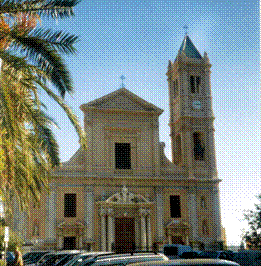
Solunto
- The ruins of Solunto are splendidly perched atop Mt Catalfano overlooking the
sea. The original city was one of the first Phoenician settlements in the
sixth century B.C.. Later occupied by Greeks and then Romans the city was
abandoned in the 2nd century A.D.. Excavations begun in 1826
continue to this day.
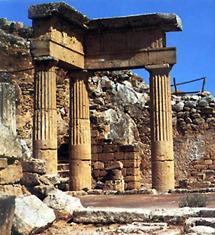
Le Madonie
- A large mountain range in the Province of Palermo, much of which has been
designated a Regional Park. Great for hiking, horseback riding and in the
winter – skiing!
Petralia Soprana/Petralia Sottana –
Petralia Soprana is the highest town in the Madonie Mountains. From it’s height
at 3763 feet above sea level, you can see all the way to Etna on the east coast.
Under Roman domination Petralia was one of the principal cities that furnished
grain to the Empire. Petralia Soprana flourished during the Norman period and
continued to expand. Eventually people settled at the base of the mountain
and Petralia Sottana was founded.
Collesano – The town developed in the 12th century around the Norman
castle which today lies in ruin. Collesano is one of the gateways into the
Madonie Mountains, and is well known for it’s wonderful cheeses.
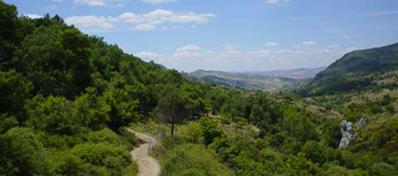
Ustica-
Archeological findings demonstrate that Ustica was settled as early as 1500
B.C.. Her true beauty, however, lies under the sea and along her coast. It is
because of these attributes that Ustica was declared the first protected marine
reserve in the Mediterranean.
